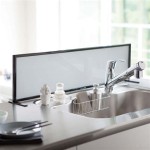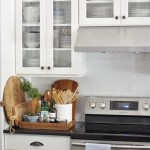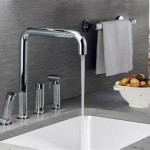Caulk for Kitchen Sink Drain: A Comprehensive Guide to Selection and Application
Caulk is an essential component in preventing leaks and maintaining the integrity of your kitchen sink drain. Choosing the right caulk and applying it properly are crucial for a durable and functional seal. This guide will provide you with all the necessary information to ensure a successful caulking experience.
Types of Caulk for Kitchen Sink Drains
There are two primary types of caulk suitable for kitchen sink drains: silicone and acrylic.
- Silicone Caulk: Highly resistant to water, mold, and mildew, making it ideal for areas exposed to moisture. It is durable and flexible, but can be more challenging to apply.
- Acrylic Caulk: Less water-resistant than silicone, but easier to apply and remove. Suitable for areas with less exposure to water or where frequent repairs may be necessary.
Choosing the Right Caulk
Consider the following factors when selecting caulk for your kitchen sink drain:
- Moisture Resistance: Choose silicone caulk if the drain is exposed to constant water or moisture.
- Flexibility: Go for silicone caulk if the drain is subject to movement or vibration.
- Application: If you prefer ease of application, acrylic caulk is a better choice.
- Color: Match the caulk to the color of your sink and countertop for a cohesive look.
Preparing the Drain
Before applying caulk, it's essential to prepare the drain:
- Clean the Surface: Remove all dirt, debris, and old caulk using a damp cloth and a cleaning solution.
- Dry the Surface: Use a clean cloth or paper towels to thoroughly dry the drain area.
- Apply Painter's Tape: If you want a clean and straight line, apply painter's tape around the edges of the drain.
Applying the Caulk
Follow these steps for a proper caulk application:
- Cut the Caulk Tube: Use a utility knife to cut the tip of the caulk tube at a 45-degree angle.
- Apply the Caulk: Squeeze the caulk gun to dispense a steady bead of caulk around the drain. Hold the gun at a 45-degree angle.
- Smooth the Caulk: Use a wet finger or a caulk smoothing tool to smooth out the caulk and ensure a uniform seal.
- Remove Painter's Tape: Once the caulk is smooth, carefully remove the painter's tape before it dries.
- Let it Cure: Allow the caulk to cure completely as per the manufacturer's instructions.
Maintenance and Replacement
Regular maintenance and replacement are crucial to ensure the integrity of the caulk seal:
- Inspect Regularly: Check the caulk for cracks, gaps, or discoloration regularly.
- Clean the Caulk: Use a damp cloth to clean the caulk to remove any dirt or debris.
- Replace Caulk: Replace the caulk if it becomes damaged or loses its seal.
Conclusion
Caulking your kitchen sink drain is a straightforward task that can prevent leaks and ensure a durable installation. By choosing the right caulk, preparing the drain, applying it properly, maintaining it, and replacing it when necessary, you can keep your kitchen sink functioning optimally for years to come.

How To Caulk A Drain 14 Steps With Pictures Wikihow Life

How To Caulk A Drain 14 Steps With Pictures Wikihow Life

Tips On Using Plumbers Putty To Seal Kitchen Sink Basket

Kwik Seal Ultra Advanced Kitchen Bath Sealant Dap Global

Silicone Instead Of Plumbers Putty On Kitchen Drain Basket

How To Caulk The Kitchen Sink With Pictures Wikihow

How To Silicone Mastic Around A Sink

How To Remove Silicone From A Stainless Steel Sink Hunker

How To Caulk Seal A Kitchen Sink On Laminate Countertop Caulking Tips

Caulking Around A Kitchen Sink
Related Posts








